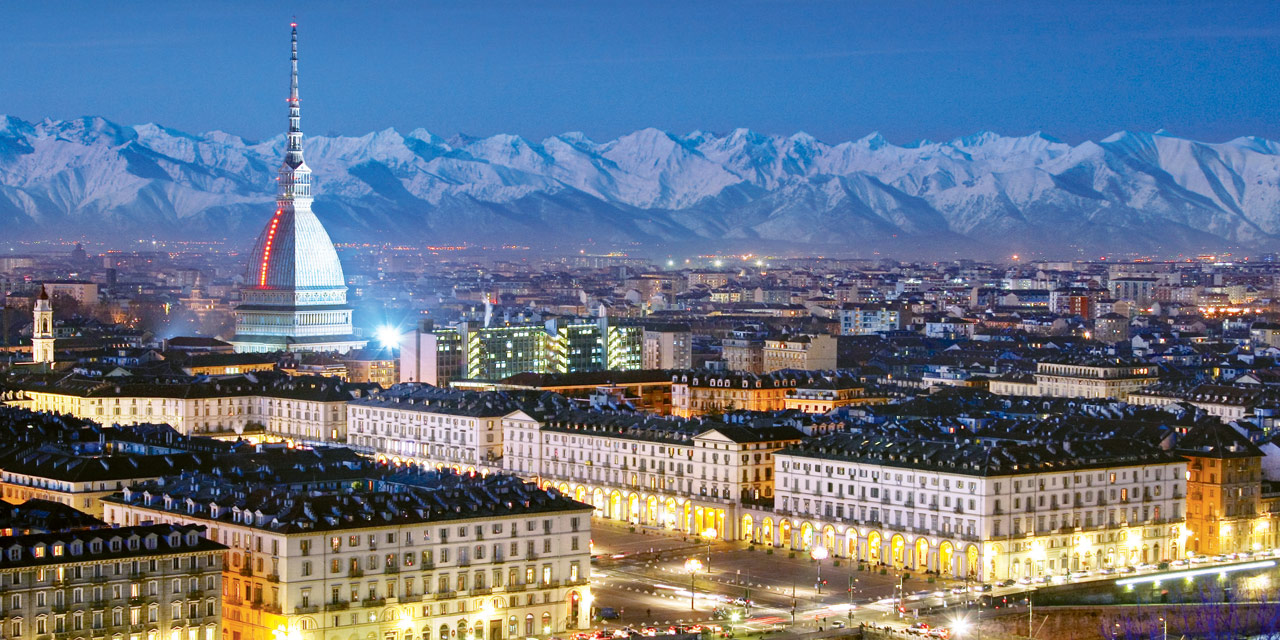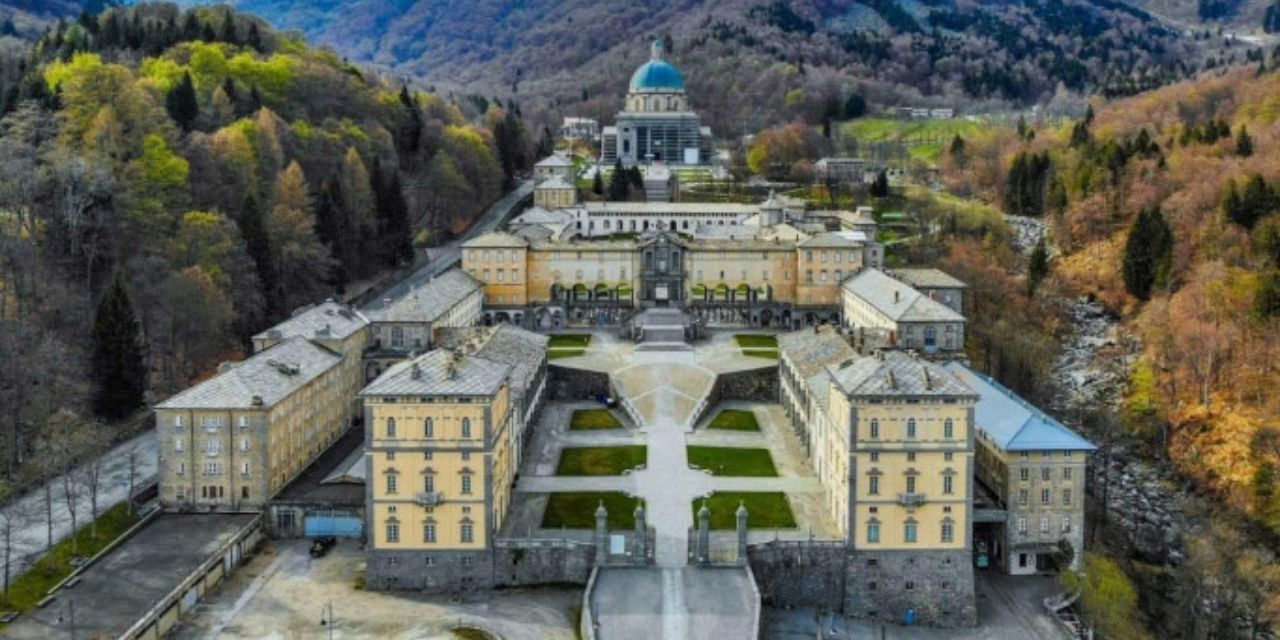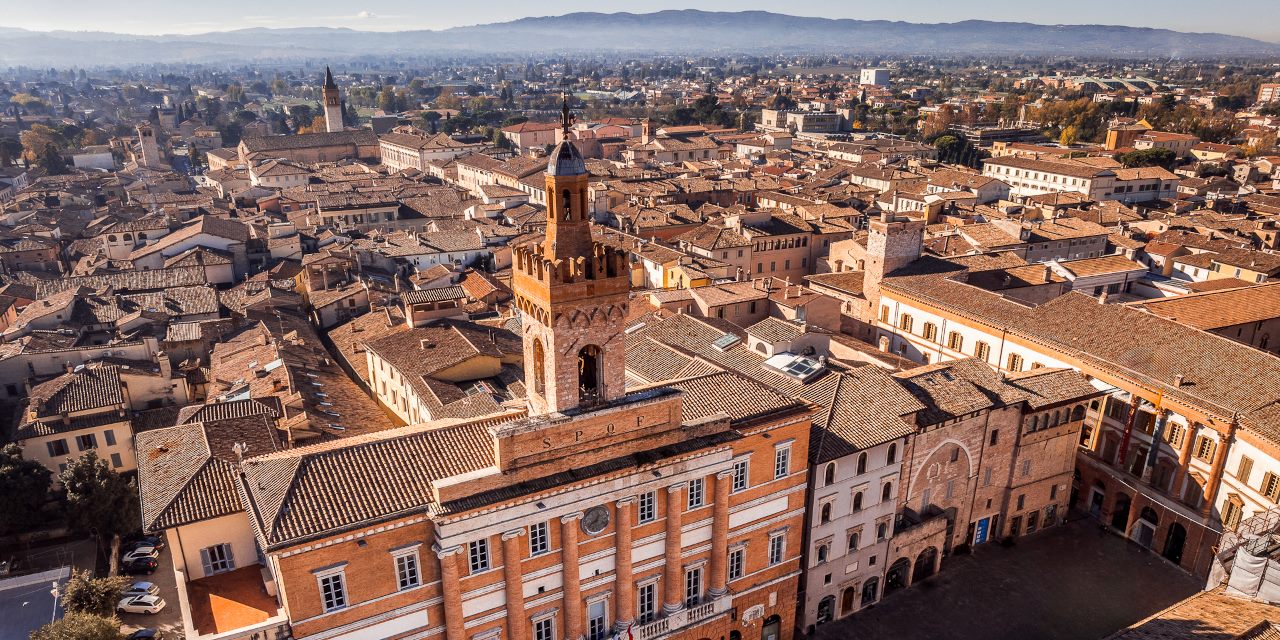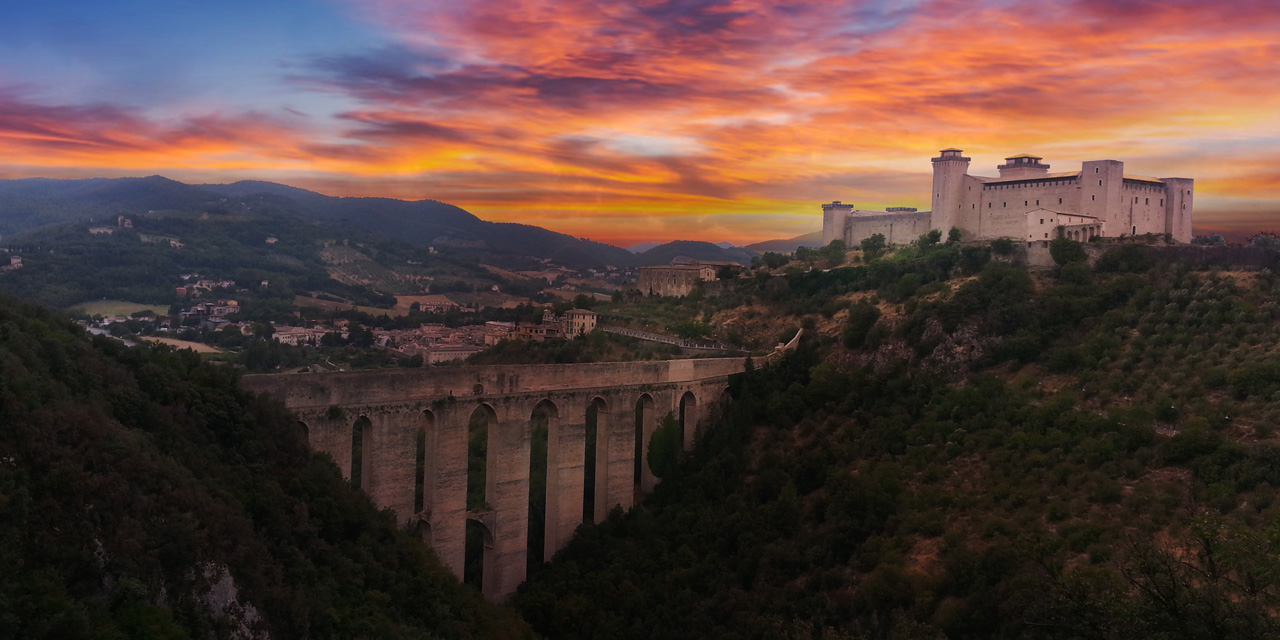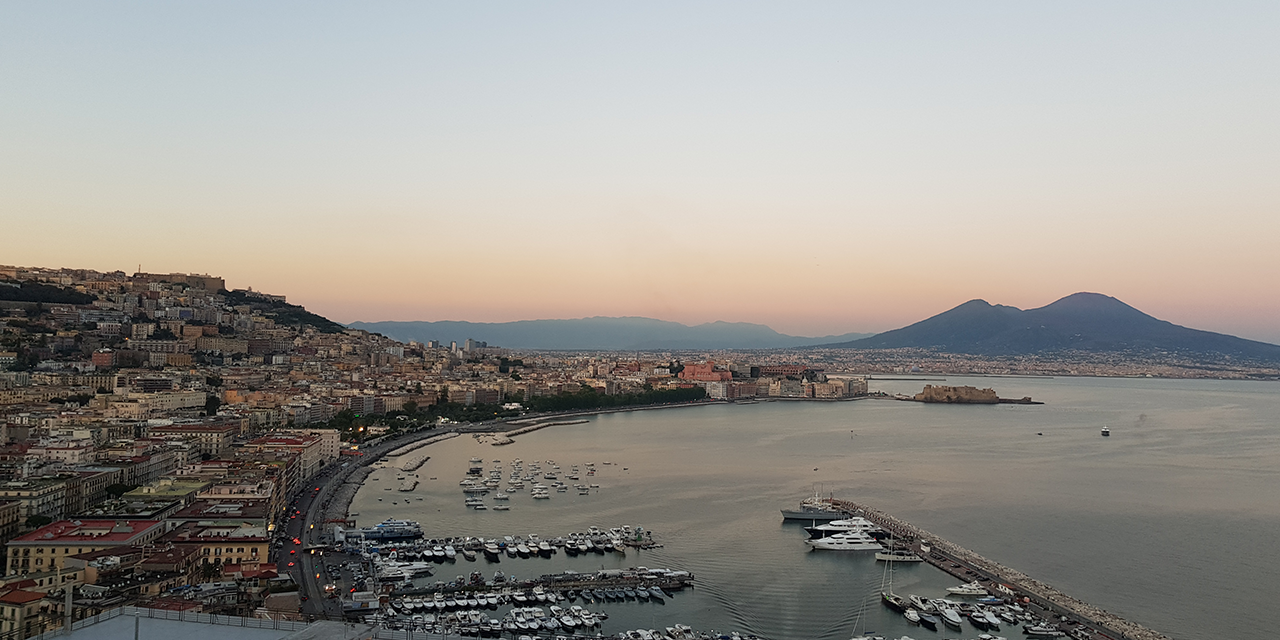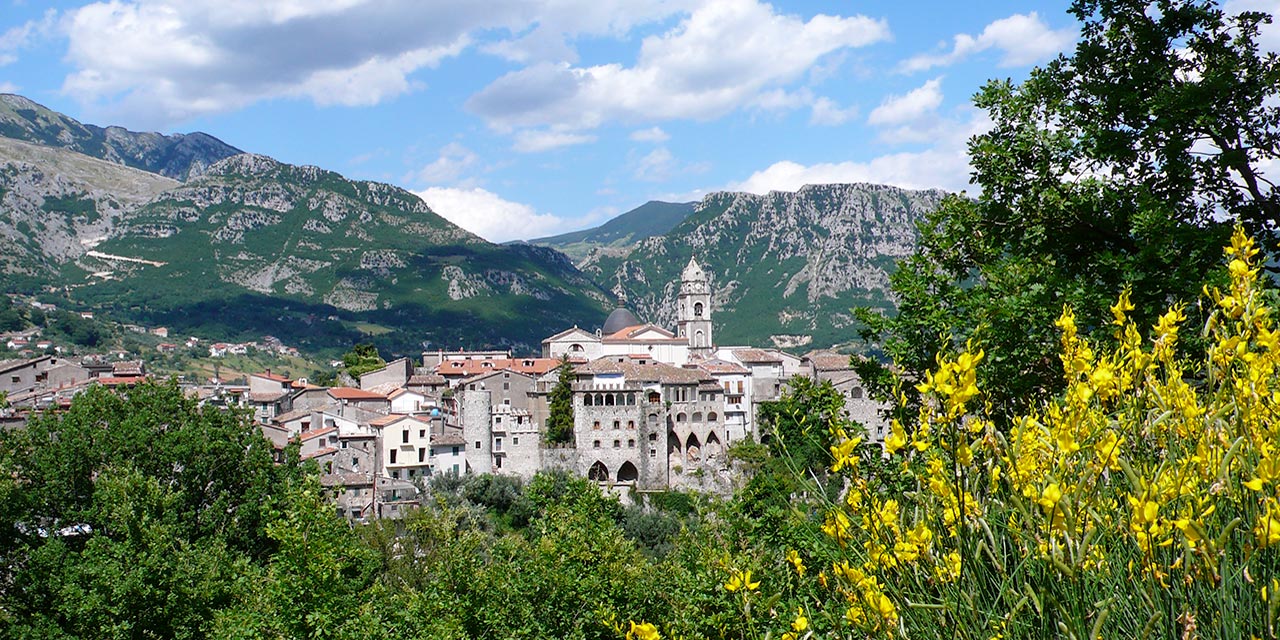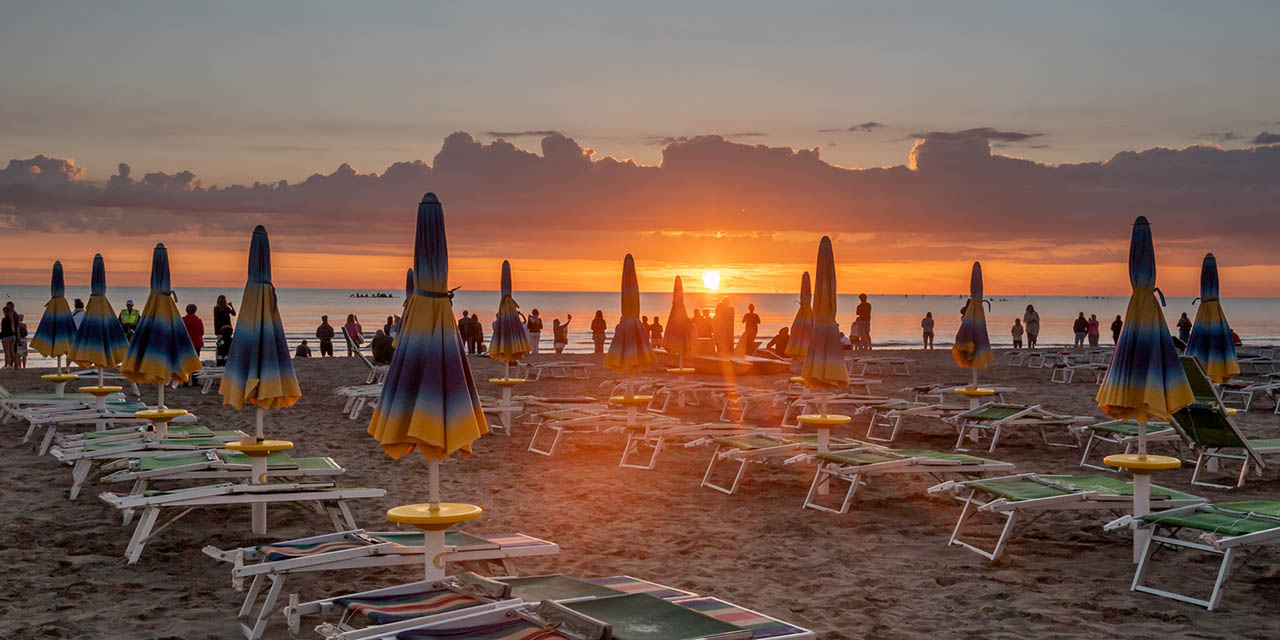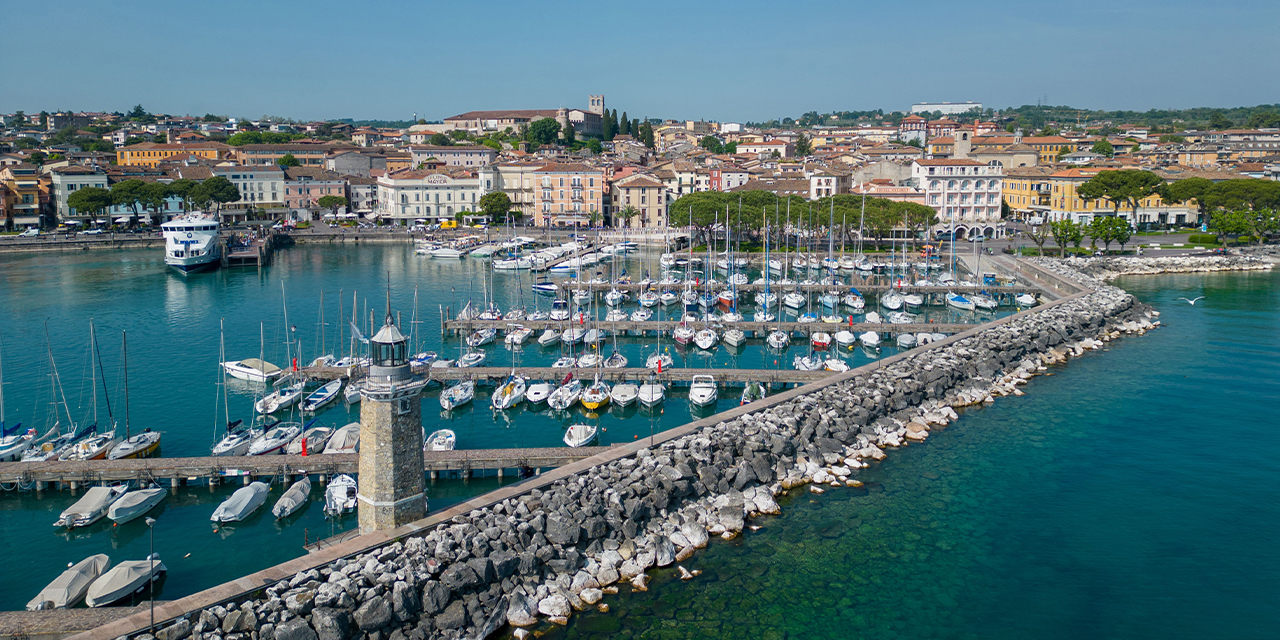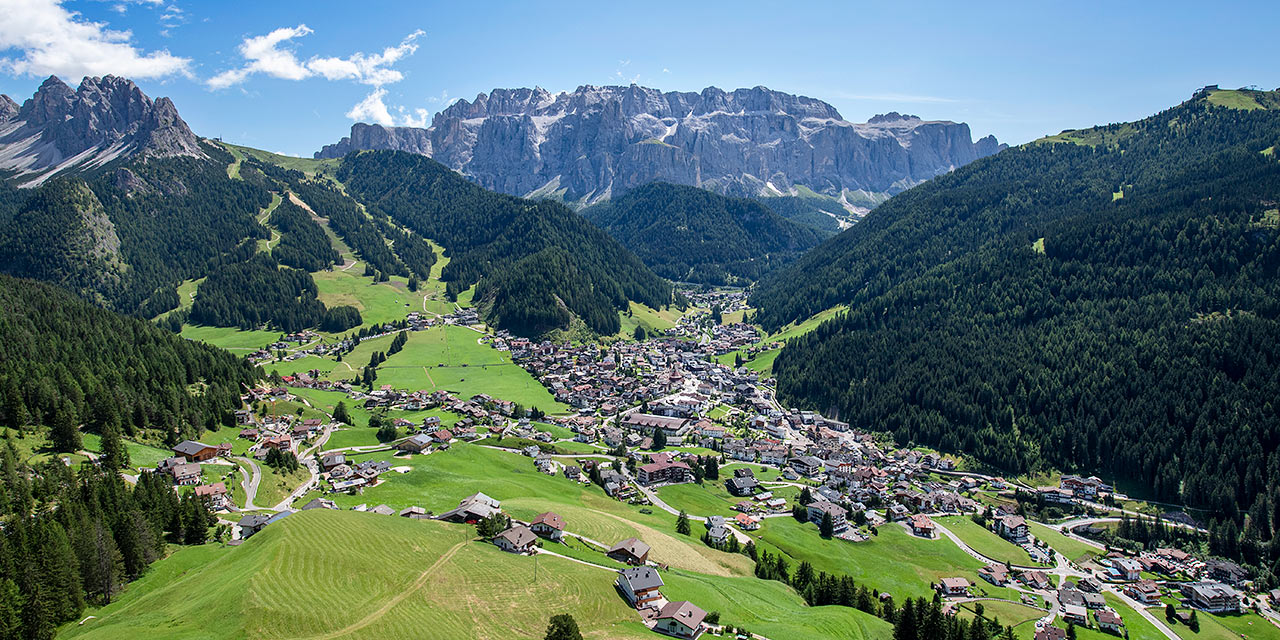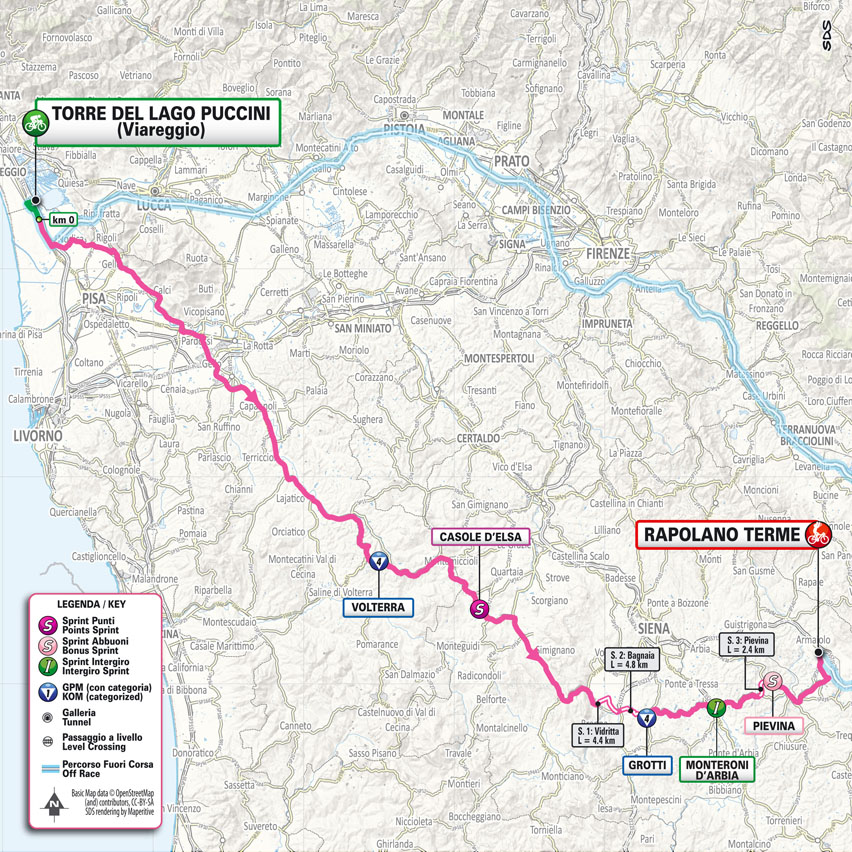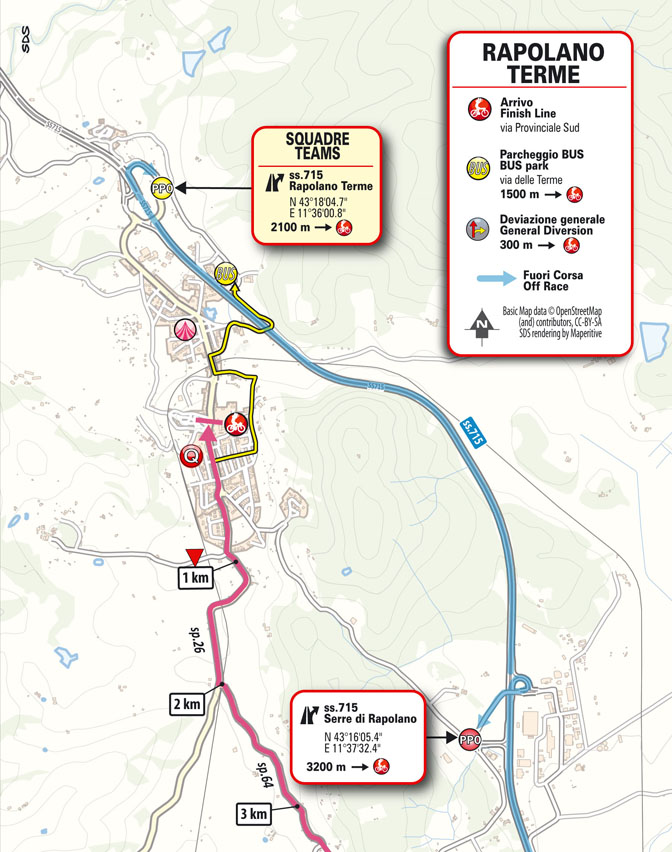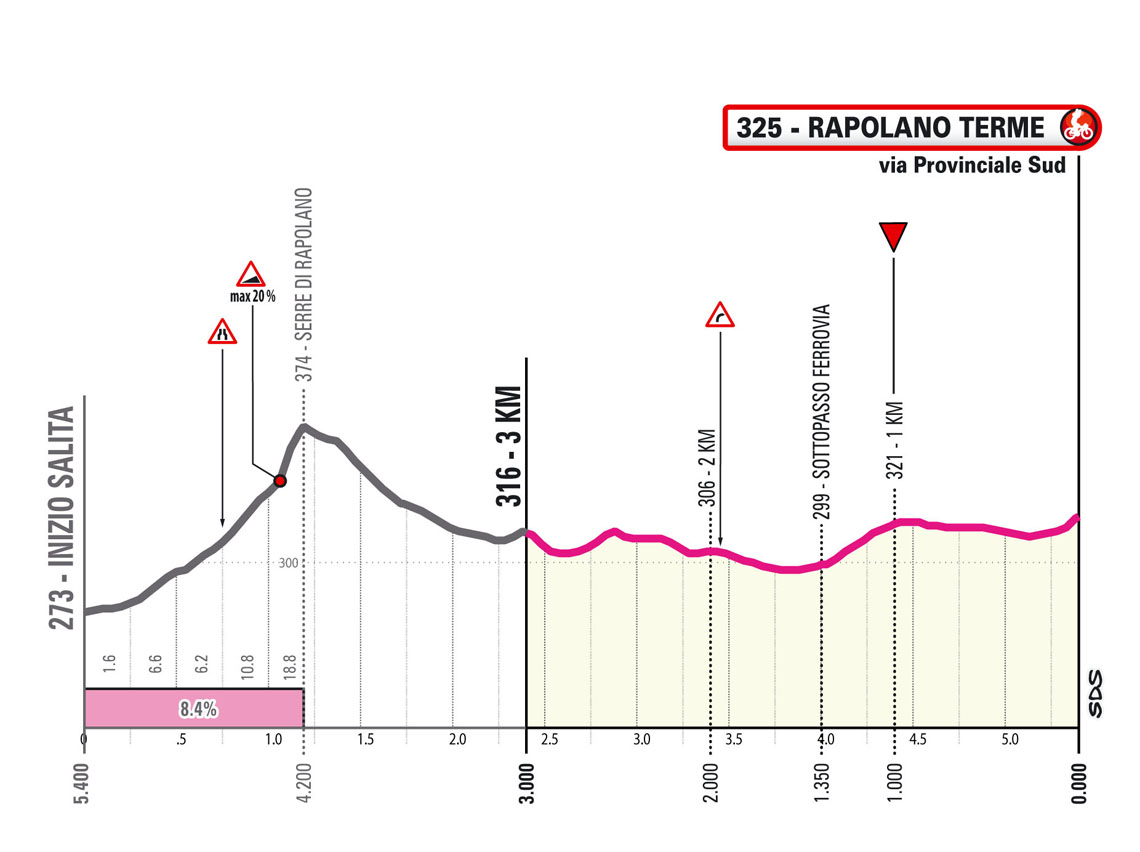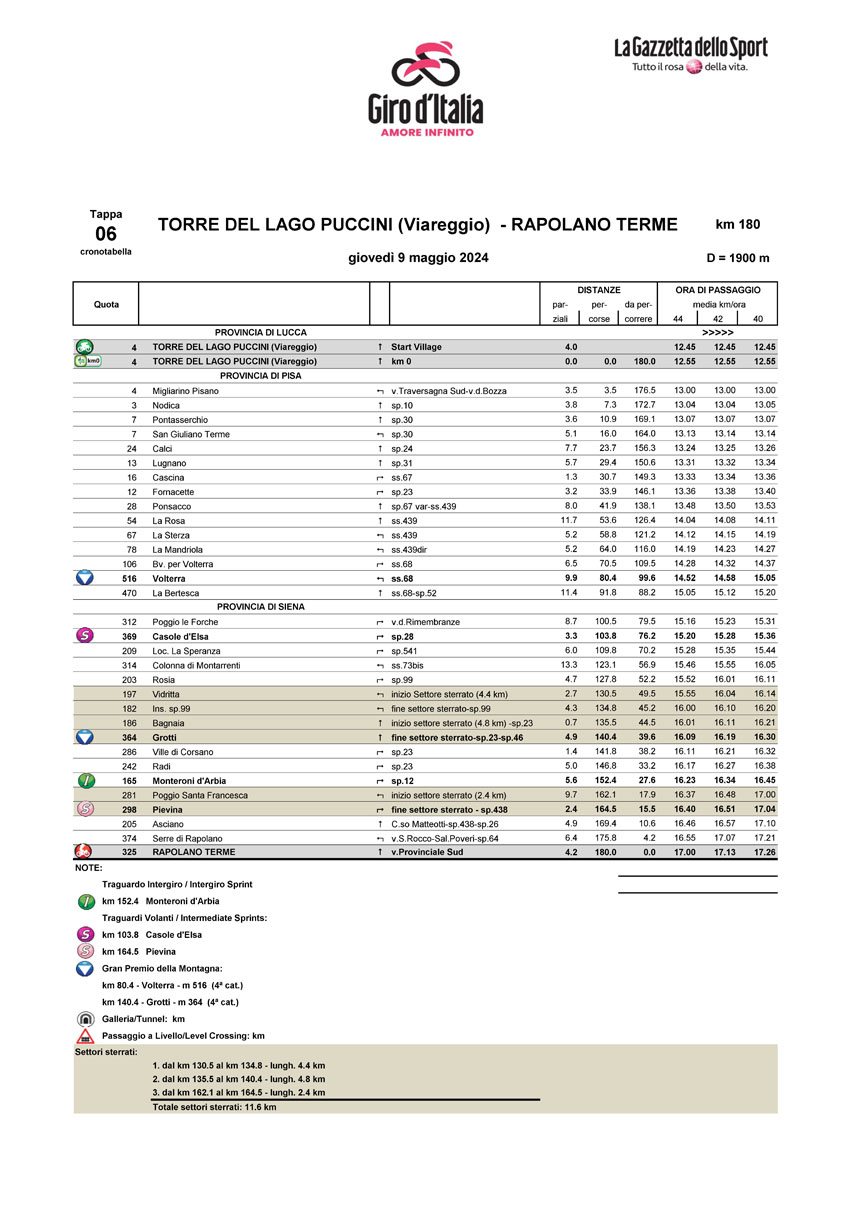
180 km - Altitude Gain 1,900m
Stage 06
Torre del Lago Puccini
Rapolano Terme
Thursday 09 May 2024 180km Altitude Gain 1,900m
Total time: 4:01:08 Withdrawn: 4
Array( [0] => Array ( [type] => athletes [pos] => 1 [id] => 127 [name] => SANCHEZ Pelayo [nome] => Pelayo [cognome] => SANCHEZ [team] => MOVISTAR TEAM [sigla_team] => MOV [val] => 4:01:08 [distacco] => 0:00 [idx] => [localita] => [abbuono] => 0:13 ) [1] => Array ( [type] => athletes [pos] => 2 [id] => 131 [name] => ALAPHILIPPE Julian [nome] => Julian [cognome] => ALAPHILIPPE [team] => SOUDAL QUICK - STEP [sigla_team] => SOQ [val] => 4:01:08 [distacco] => 0:00 [idx] => [localita] => [abbuono] => 0:11 ) [2] => Array ( [type] => athletes [pos] => 3 [id] => 156 [name] => PLAPP Lucas [nome] => Lucas [cognome] => PLAPP [team] => TEAM JAYCO ALULA [sigla_team] => JAY [val] => 4:01:09 [distacco] => 0:01 [idx] => [localita] => [abbuono] => 0:08 ) [3] => Array ( [type] => athletes [pos] => 4 [id] => 76 [name] => PICCOLO Andrea [nome] => Andrea [cognome] => PICCOLO [team] => EF EDUCATION - EASYPOST [sigla_team] => EFE [val] => 4:01:32 [distacco] => 0:24 [idx] => [localita] => [abbuono] => ) [4] => Array ( [type] => athletes [pos] => 5 [id] => 5 [name] => NARVAEZ Jhonatan [nome] => Jhonatan [cognome] => NARVAEZ [team] => INEOS GRENADIERS [sigla_team] => IGD [val] => 4:01:37 [distacco] => 0:29 [idx] => [localita] => [abbuono] => ) [5] => Array ( [type] => athletes [pos] => 6 [id] => 155 [name] => MEZGEC Luka [nome] => Luka [cognome] => MEZGEC [team] => TEAM JAYCO ALULA [sigla_team] => JAY [val] => 4:01:37 [distacco] => 0:29 [idx] => [localita] => [abbuono] => ) [6] => Array ( [type] => athletes [pos] => 7 [id] => 14 [name] => HERMANS Quinten [nome] => Quinten [cognome] => HERMANS [team] => ALPECIN - DECEUNINCK [sigla_team] => ADC [val] => 4:01:37 [distacco] => 0:29 [idx] => [localita] => [abbuono] => ) [7] => Array ( [type] => athletes [pos] => 8 [id] => 107 [name] => SCHULTZ Nicholas [nome] => Nicholas [cognome] => SCHULTZ [team] => ISRAEL - PREMIER TECH [sigla_team] => IPT [val] => 4:01:37 [distacco] => 0:29 [idx] => [localita] => [abbuono] => ) [8] => Array ( [type] => athletes [pos] => 9 [id] => 41 [name] => MARTINEZ Daniel Felipe [nome] => Daniel Felipe [cognome] => MARTINEZ [team] => BORA - HANSGROHE [sigla_team] => BOH [val] => 4:01:37 [distacco] => 0:29 [idx] => [localita] => [abbuono] => ) [9] => Array ( [type] => athletes [pos] => 10 [id] => 31 [name] => LUTSENKO Alexey [nome] => Alexey [cognome] => LUTSENKO [team] => ASTANA QAZAQSTAN TEAM [sigla_team] => AST [val] => 4:01:37 [distacco] => 0:29 [idx] => [localita] => [abbuono] => ) [10] => Array ( [type] => athletes [pos] => 11 [id] => 92 [name] => CALMEJANE Lilian [nome] => Lilian [cognome] => CALMEJANE [team] => INTERMARCHE' - WANTY [sigla_team] => IWA [val] => 4:01:37 [distacco] => 0:29 [idx] => [localita] => [abbuono] => ) [11] => Array ( [type] => athletes [pos] => 12 [id] => 62 [name] => BAUDIN Alex [nome] => Alex [cognome] => BAUDIN [team] => DECATHLON AG2R LA MONDIALE TEAM [sigla_team] => DAT [val] => 4:01:37 [distacco] => 0:29 [idx] => [localita] => [abbuono] => ) [12] => Array ( [type] => athletes [pos] => 13 [id] => 38 [name] => VELASCO Simone [nome] => Simone [cognome] => VELASCO [team] => ASTANA QAZAQSTAN TEAM [sigla_team] => AST [val] => 4:01:37 [distacco] => 0:29 [idx] => [localita] => [abbuono] => ) [13] => Array ( [type] => athletes [pos] => 14 [id] => 78 [name] => VALGREN Michael [nome] => Michael [cognome] => VALGREN [team] => EF EDUCATION - EASYPOST [sigla_team] => EFE [val] => 4:01:37 [distacco] => 0:29 [idx] => [localita] => [abbuono] => ) [14] => Array ( [type] => athletes [pos] => 15 [id] => 1 [name] => THOMAS Geraint [nome] => Geraint [cognome] => THOMAS [team] => INEOS GRENADIERS [sigla_team] => IGD [val] => 4:01:37 [distacco] => 0:29 [idx] => [localita] => [abbuono] => ) [15] => Array ( [type] => athletes [pos] => 16 [id] => 82 [name] => ASKEY Lewis [nome] => Lewis [cognome] => ASKEY [team] => GROUPAMA - FDJ [sigla_team] => GFC [val] => 4:01:37 [distacco] => 0:29 [idx] => [localita] => [abbuono] => ) [16] => Array ( [type] => athletes [pos] => 17 [id] => 28 [name] => VERRE Alessandro [nome] => Alessandro [cognome] => VERRE [team] => ARKEA - B&B HOTELS [sigla_team] => ARK [val] => 4:01:37 [distacco] => 0:29 [idx] => [localita] => [abbuono] => ) [17] => Array ( [type] => athletes [pos] => 18 [id] => 191 [name] => POGACAR Tadej [nome] => Tadej [cognome] => POGACAR [team] => UAE TEAM EMIRATES [sigla_team] => UAD [val] => 4:01:37 [distacco] => 0:29 [idx] => [localita] => [abbuono] => ) [18] => Array ( [type] => athletes [pos] => 19 [id] => 211 [name] => TIBERI Antonio [nome] => Antonio [cognome] => TIBERI [team] => BAHRAIN VICTORIOUS [sigla_team] => TBV [val] => 4:01:37 [distacco] => 0:29 [idx] => [localita] => [abbuono] => ) [19] => Array ( [type] => athletes [pos] => 20 [id] => 88 [name] => PALENI Enzo [nome] => Enzo [cognome] => PALENI [team] => GROUPAMA - FDJ [sigla_team] => GFC [val] => 4:01:37 [distacco] => 0:29 [idx] => [localita] => [abbuono] => ) [20] => Array ( [type] => athletes [pos] => 21 [id] => 37 [name] => SCARONI Christian [nome] => Christian [cognome] => SCARONI [team] => ASTANA QAZAQSTAN TEAM [sigla_team] => AST [val] => 4:01:37 [distacco] => 0:29 [idx] => [localita] => [abbuono] => ) [21] => Array ( [type] => athletes [pos] => 22 [id] => 141 [name] => BARDET Romain [nome] => Romain [cognome] => BARDET [team] => TEAM DSM - FIRMENICH POSTNL [sigla_team] => DFP [val] => 4:01:37 [distacco] => 0:29 [idx] => [localita] => [abbuono] => ) [22] => Array ( [type] => athletes [pos] => 23 [id] => 71 [name] => CHAVES Esteban [nome] => Esteban [cognome] => CHAVES [team] => EF EDUCATION - EASYPOST [sigla_team] => EFE [val] => 4:01:37 [distacco] => 0:29 [idx] => [localita] => [abbuono] => ) [23] => Array ( [type] => athletes [pos] => 24 [id] => 63 [name] => PARET PEINTRE Aurelien [nome] => Aurelien [cognome] => PARET PEINTRE [team] => DECATHLON AG2R LA MONDIALE TEAM [sigla_team] => DAT [val] => 4:01:37 [distacco] => 0:29 [idx] => [localita] => [abbuono] => ) [24] => Array ( [type] => athletes [pos] => 25 [id] => 168 [name] => PIGANZOLI Davide [nome] => Davide [cognome] => PIGANZOLI [team] => TEAM POLTI KOMETA [sigla_team] => PTK [val] => 4:01:37 [distacco] => 0:29 [idx] => [localita] => [abbuono] => ) [25] => Array ( [type] => athletes [pos] => 26 [id] => 68 [name] => WARBASSE Lawrence [nome] => Lawrence [cognome] => WARBASSE [team] => DECATHLON AG2R LA MONDIALE TEAM [sigla_team] => DAT [val] => 4:01:37 [distacco] => 0:29 [idx] => [localita] => [abbuono] => ) [26] => Array ( [type] => athletes [pos] => 27 [id] => 158 [name] => ZANA Filippo [nome] => Filippo [cognome] => ZANA [team] => TEAM JAYCO ALULA [sigla_team] => JAY [val] => 4:01:37 [distacco] => 0:29 [idx] => [localita] => [abbuono] => ) [27] => Array ( [type] => athletes [pos] => 28 [id] => 26 [name] => RIES Michel [nome] => Michel [cognome] => RIES [team] => ARKEA - B&B HOTELS [sigla_team] => ARK [val] => 4:01:37 [distacco] => 0:29 [idx] => [localita] => [abbuono] => ) [28] => Array ( [type] => athletes [pos] => 29 [id] => 202 [name] => COVILI Luca [nome] => Luca [cognome] => COVILI [team] => VF GROUP - BARDIANI CSF- FAIZANE' [sigla_team] => VBF [val] => 4:01:37 [distacco] => 0:29 [idx] => [localita] => [abbuono] => ) [29] => Array ( [type] => athletes [pos] => 30 [id] => 126 [name] => RUBIO Einer [nome] => Einer [cognome] => RUBIO [team] => MOVISTAR TEAM [sigla_team] => MOV [val] => 4:01:37 [distacco] => 0:29 [idx] => [localita] => [abbuono] => ) [30] => Array ( [type] => athletes [pos] => 31 [id] => 133 [name] => HIRT Jan [nome] => Jan [cognome] => HIRT [team] => SOUDAL QUICK - STEP [sigla_team] => SOQ [val] => 4:01:37 [distacco] => 0:29 [idx] => [localita] => [abbuono] => ) [31] => Array ( [type] => athletes [pos] => 32 [id] => 196 [name] => MAJKA Rafal [nome] => Rafal [cognome] => MAJKA [team] => UAE TEAM EMIRATES [sigla_team] => UAD [val] => 4:01:37 [distacco] => 0:29 [idx] => [localita] => [abbuono] => ) [32] => Array ( [type] => athletes [pos] => 33 [id] => 116 [name] => LOPEZ Juan Pedro [nome] => Juan Pedro [cognome] => LOPEZ [team] => LIDL-TREK [sigla_team] => LTK [val] => 4:01:37 [distacco] => 0:29 [idx] => [localita] => [abbuono] => ) [33] => Array ( [type] => athletes [pos] => 34 [id] => 61 [name] => O'CONNOR Ben [nome] => Ben [cognome] => O'CONNOR [team] => DECATHLON AG2R LA MONDIALE TEAM [sigla_team] => DAT [val] => 4:01:37 [distacco] => 0:29 [idx] => [localita] => [abbuono] => ) [34] => Array ( [type] => athletes [pos] => 35 [id] => 138 [name] => VANSEVENANT Mauri [nome] => Mauri [cognome] => VANSEVENANT [team] => SOUDAL QUICK - STEP [sigla_team] => SOQ [val] => 4:01:37 [distacco] => 0:29 [idx] => [localita] => [abbuono] => ) [35] => Array ( [type] => athletes [pos] => 36 [id] => 56 [name] => GESCHKE Simon [nome] => Simon [cognome] => GESCHKE [team] => COFIDIS [sigla_team] => COF [val] => 4:01:37 [distacco] => 0:29 [idx] => [localita] => [abbuono] => ) [36] => Array ( [type] => athletes [pos] => 37 [id] => 33 [name] => FORTUNATO Lorenzo [nome] => Lorenzo [cognome] => FORTUNATO [team] => ASTANA QAZAQSTAN TEAM [sigla_team] => AST [val] => 4:01:37 [distacco] => 0:29 [idx] => [localita] => [abbuono] => ) [37] => Array ( [type] => athletes [pos] => 38 [id] => 176 [name] => UIJTDEBROEKS Cian [nome] => Cian [cognome] => UIJTDEBROEKS [team] => TEAM VISMA - LEASE A BIKE [sigla_team] => TVL [val] => 4:01:37 [distacco] => 0:29 [idx] => [localita] => [abbuono] => ) [38] => Array ( [type] => athletes [pos] => 39 [id] => 201 [name] => POZZOVIVO Domenico [nome] => Domenico [cognome] => POZZOVIVO [team] => VF GROUP - BARDIANI CSF- FAIZANE' [sigla_team] => VBF [val] => 4:01:37 [distacco] => 0:29 [idx] => [localita] => [abbuono] => ) [39] => Array ( [type] => athletes [pos] => 40 [id] => 2 [name] => ARENSMAN Thymen [nome] => Thymen [cognome] => ARENSMAN [team] => INEOS GRENADIERS [sigla_team] => IGD [val] => 4:01:37 [distacco] => 0:29 [idx] => [localita] => [abbuono] => ) [40] => Array ( [type] => athletes [pos] => 41 [id] => 187 [name] => STORER Michael [nome] => Michael [cognome] => STORER [team] => TUDOR PRO CYCLING TEAM [sigla_team] => TUD [val] => 4:01:37 [distacco] => 0:29 [idx] => [localita] => [abbuono] => ) [41] => Array ( [type] => athletes [pos] => 42 [id] => 64 [name] => PARET PEINTRE Valentin [nome] => Valentin [cognome] => PARET PEINTRE [team] => DECATHLON AG2R LA MONDIALE TEAM [sigla_team] => DAT [val] => 4:01:37 [distacco] => 0:29 [idx] => [localita] => [abbuono] => ) [42] => Array ( [type] => athletes [pos] => 43 [id] => 77 [name] => STEINHAUSER Georg [nome] => Georg [cognome] => STEINHAUSER [team] => EF EDUCATION - EASYPOST [sigla_team] => EFE [val] => 4:01:37 [distacco] => 0:29 [idx] => [localita] => [abbuono] => ) [43] => Array ( [type] => athletes [pos] => 44 [id] => 194 [name] => GROSSSCHARTNER Felix [nome] => Felix [cognome] => GROSSSCHARTNER [team] => UAE TEAM EMIRATES [sigla_team] => UAD [val] => 4:01:44 [distacco] => 0:36 [idx] => [localita] => [abbuono] => ) [44] => Array ( [type] => athletes [pos] => 45 [id] => 207 [name] => TONELLI Alessandro [nome] => Alessandro [cognome] => TONELLI [team] => VF GROUP - BARDIANI CSF- FAIZANE' [sigla_team] => VBF [val] => 4:02:35 [distacco] => 01:27 [idx] => [localita] => [abbuono] => ) [45] => Array ( [type] => athletes [pos] => 46 [id] => 165 [name] => MAESTRI Mirco [nome] => Mirco [cognome] => MAESTRI [team] => TEAM POLTI KOMETA [sigla_team] => PTK [val] => 4:02:35 [distacco] => 01:27 [idx] => [localita] => [abbuono] => ) [46] => Array ( [type] => athletes [pos] => 47 [id] => 128 [name] => TORRES Albert [nome] => Albert [cognome] => TORRES [team] => MOVISTAR TEAM [sigla_team] => MOV [val] => 4:02:39 [distacco] => 01:31 [idx] => [localita] => [abbuono] => ) [47] => Array ( [type] => athletes [pos] => 48 [id] => 72 [name] => CEPEDA Jefferson [nome] => Jefferson [cognome] => CEPEDA [team] => EF EDUCATION - EASYPOST [sigla_team] => EFE [val] => 4:02:39 [distacco] => 01:31 [idx] => [localita] => [abbuono] => ) [48] => Array ( [type] => athletes [pos] => 49 [id] => 42 [name] => ALEOTTI Giovanni [nome] => Giovanni [cognome] => ALEOTTI [team] => BORA - HANSGROHE [sigla_team] => BOH [val] => 4:02:39 [distacco] => 01:31 [idx] => [localita] => [abbuono] => ) [49] => Array ( [type] => athletes [pos] => 50 [id] => 177 [name] => VALTER Attila [nome] => Attila [cognome] => VALTER [team] => TEAM VISMA - LEASE A BIKE [sigla_team] => TVL [val] => 4:02:39 [distacco] => 01:31 [idx] => [localita] => [abbuono] => ) [50] => Array ( [type] => athletes [pos] => 51 [id] => 13 [name] => CONCI Nicola [nome] => Nicola [cognome] => CONCI [team] => ALPECIN - DECEUNINCK [sigla_team] => ADC [val] => 4:02:58 [distacco] => 01:50 [idx] => [localita] => [abbuono] => ) [51] => Array ( [type] => athletes [pos] => 52 [id] => 217 [name] => SUTTERLIN Jasha [nome] => Jasha [cognome] => SUTTERLIN [team] => BAHRAIN VICTORIOUS [sigla_team] => TBV [val] => 4:03:15 [distacco] => 02:07 [idx] => [localita] => [abbuono] => ) [52] => Array ( [type] => athletes [pos] => 53 [id] => 188 [name] => STORK Florian [nome] => Florian [cognome] => STORK [team] => TUDOR PRO CYCLING TEAM [sigla_team] => TUD [val] => 4:03:15 [distacco] => 02:07 [idx] => [localita] => [abbuono] => ) [53] => Array ( [type] => athletes [pos] => 54 [id] => 18 [name] => VAN DEN BOSSCHE Fabio [nome] => Fabio [cognome] => VAN DEN BOSSCHE [team] => ALPECIN - DECEUNINCK [sigla_team] => ADC [val] => 4:03:53 [distacco] => 02:45 [idx] => [localita] => [abbuono] => ) [54] => Array ( [type] => athletes [pos] => 55 [id] => 143 [name] => HAMILTON Christopher [nome] => Christopher [cognome] => HAMILTON [team] => TEAM DSM - FIRMENICH POSTNL [sigla_team] => DFP [val] => 4:04:38 [distacco] => 03:30 [idx] => [localita] => [abbuono] => ) [55] => Array ( [type] => athletes [pos] => 56 [id] => 16 [name] => KIELICH Timo [nome] => Timo [cognome] => KIELICH [team] => ALPECIN - DECEUNINCK [sigla_team] => ADC [val] => 4:04:41 [distacco] => 03:33 [idx] => [localita] => [abbuono] => ) [56] => Array ( [type] => athletes [pos] => 57 [id] => 65 [name] => TOUZE Damien [nome] => Damien [cognome] => TOUZE [team] => DECATHLON AG2R LA MONDIALE TEAM [sigla_team] => DAT [val] => 4:05:08 [distacco] => 04:00 [idx] => [localita] => [abbuono] => ) [57] => Array ( [type] => athletes [pos] => 58 [id] => 6 [name] => SHEFFIELD Magnus [nome] => Magnus [cognome] => SHEFFIELD [team] => INEOS GRENADIERS [sigla_team] => IGD [val] => 4:05:27 [distacco] => 04:19 [idx] => [localita] => [abbuono] => ) [58] => Array ( [type] => athletes [pos] => 59 [id] => 83 [name] => BARTHE Cyril [nome] => Cyril [cognome] => BARTHE [team] => GROUPAMA - FDJ [sigla_team] => GFC [val] => 4:06:56 [distacco] => 05:48 [idx] => [localita] => [abbuono] => ) [59] => Array ( [type] => athletes [pos] => 60 [id] => 114 [name] => GHEBREIGZABHIER Amanuel [nome] => Amanuel [cognome] => GHEBREIGZABHIER [team] => LIDL-TREK [sigla_team] => LTK [val] => 4:06:56 [distacco] => 05:48 [idx] => [localita] => [abbuono] => ) [60] => Array ( [type] => athletes [pos] => 61 [id] => 121 [name] => QUINTANA Nairo [nome] => Nairo [cognome] => QUINTANA [team] => MOVISTAR TEAM [sigla_team] => MOV [val] => 4:06:56 [distacco] => 05:48 [idx] => [localita] => [abbuono] => ) [61] => Array ( [type] => athletes [pos] => 62 [id] => 32 [name] => BALLERINI Davide [nome] => Davide [cognome] => BALLERINI [team] => ASTANA QAZAQSTAN TEAM [sigla_team] => AST [val] => 4:08:23 [distacco] => 07:15 [idx] => [localita] => [abbuono] => ) [62] => Array ( [type] => athletes [pos] => 63 [id] => 147 [name] => VERMAERKE Kevin [nome] => Kevin [cognome] => VERMAERKE [team] => TEAM DSM - FIRMENICH POSTNL [sigla_team] => DFP [val] => 4:08:36 [distacco] => 07:28 [idx] => [localita] => [abbuono] => ) [63] => Array ( [type] => athletes [pos] => 64 [id] => 75 [name] => HONORE' Frolich Mikkel [nome] => Frolich Mikkel [cognome] => HONORE' [team] => EF EDUCATION - EASYPOST [sigla_team] => EFE [val] => 4:10:08 [distacco] => 09:00 [idx] => [localita] => [abbuono] => ) [64] => Array ( [type] => athletes [pos] => 65 [id] => 34 [name] => KANTER Max [nome] => Max [cognome] => KANTER [team] => ASTANA QAZAQSTAN TEAM [sigla_team] => AST [val] => 4:10:08 [distacco] => 09:00 [idx] => [localita] => [abbuono] => ) [65] => Array ( [type] => athletes [pos] => 66 [id] => 215 [name] => PASQUALON Andrea [nome] => Andrea [cognome] => PASQUALON [team] => BAHRAIN VICTORIOUS [sigla_team] => TBV [val] => 4:10:08 [distacco] => 09:00 [idx] => [localita] => [abbuono] => ) [66] => Array ( [type] => athletes [pos] => 67 [id] => 93 [name] => COLLEONI Kevin [nome] => Kevin [cognome] => COLLEONI [team] => INTERMARCHE' - WANTY [sigla_team] => IWA [val] => 4:10:08 [distacco] => 09:00 [idx] => [localita] => [abbuono] => ) [67] => Array ( [type] => athletes [pos] => 68 [id] => 181 [name] => TRENTIN Matteo [nome] => Matteo [cognome] => TRENTIN [team] => TUDOR PRO CYCLING TEAM [sigla_team] => TUD [val] => 4:10:08 [distacco] => 09:00 [idx] => [localita] => [abbuono] => ) [68] => Array ( [type] => athletes [pos] => 69 [id] => 216 [name] => ZAMBANINI Edoardo [nome] => Edoardo [cognome] => ZAMBANINI [team] => BAHRAIN VICTORIOUS [sigla_team] => TBV [val] => 4:10:08 [distacco] => 09:00 [idx] => [localita] => [abbuono] => ) [69] => Array ( [type] => athletes [pos] => 70 [id] => 67 [name] => VENDRAME Andrea [nome] => Andrea [cognome] => VENDRAME [team] => DECATHLON AG2R LA MONDIALE TEAM [sigla_team] => DAT [val] => 4:10:08 [distacco] => 09:00 [idx] => [localita] => [abbuono] => ) [70] => Array ( [type] => athletes [pos] => 71 [id] => 203 [name] => FIORELLI Filippo [nome] => Filippo [cognome] => FIORELLI [team] => VF GROUP - BARDIANI CSF- FAIZANE' [sigla_team] => VBF [val] => 4:10:08 [distacco] => 09:00 [idx] => [localita] => [abbuono] => ) [71] => Array ( [type] => athletes [pos] => 72 [id] => 153 [name] => EWAN Caleb [nome] => Caleb [cognome] => EWAN [team] => TEAM JAYCO ALULA [sigla_team] => JAY [val] => 4:10:08 [distacco] => 09:00 [idx] => [localita] => [abbuono] => ) [72] => Array ( [type] => athletes [pos] => 73 [id] => 17 [name] => PLANCKAERT Edward [nome] => Edward [cognome] => PLANCKAERT [team] => ALPECIN - DECEUNINCK [sigla_team] => ADC [val] => 4:10:08 [distacco] => 09:00 [idx] => [localita] => [abbuono] => ) [73] => Array ( [type] => athletes [pos] => 74 [id] => 11 [name] => GROVES Kaden [nome] => Kaden [cognome] => GROVES [team] => ALPECIN - DECEUNINCK [sigla_team] => ADC [val] => 4:10:08 [distacco] => 09:00 [idx] => [localita] => [abbuono] => ) [74] => Array ( [type] => athletes [pos] => 75 [id] => 151 [name] => DE MARCHI Alessandro [nome] => Alessandro [cognome] => DE MARCHI [team] => TEAM JAYCO ALULA [sigla_team] => JAY [val] => 4:10:29 [distacco] => 09:21 [idx] => [localita] => [abbuono] => ) [75] => Array ( [type] => athletes [pos] => 76 [id] => 94 [name] => DE POOTER Dries [nome] => Dries [cognome] => DE POOTER [team] => INTERMARCHE' - WANTY [sigla_team] => IWA [val] => 4:11:24 [distacco] => 10:16 [idx] => [localita] => [abbuono] => ) [76] => Array ( [type] => athletes [pos] => 77 [id] => 47 [name] => SCHACHMANN Maximilian [nome] => Maximilian [cognome] => SCHACHMANN [team] => BORA - HANSGROHE [sigla_team] => BOH [val] => 4:14:41 [distacco] => 13:33 [idx] => [localita] => [abbuono] => ) [77] => Array ( [type] => athletes [pos] => 78 [id] => 43 [name] => GAMPER Patrick [nome] => Patrick [cognome] => GAMPER [team] => BORA - HANSGROHE [sigla_team] => BOH [val] => 4:14:41 [distacco] => 13:33 [idx] => [localita] => [abbuono] => ) [78] => Array ( [type] => athletes [pos] => 79 [id] => 109 [name] => VERNON Ethan [nome] => Ethan [cognome] => VERNON [team] => ISRAEL - PREMIER TECH [sigla_team] => IPT [val] => 4:14:41 [distacco] => 13:33 [idx] => [localita] => [abbuono] => ) [79] => Array ( [type] => athletes [pos] => 80 [id] => 98 [name] => VAN SINTMAARTENSDIJK Roel [nome] => Roel [cognome] => VAN SINTMAARTENSDIJK [team] => INTERMARCHE' - WANTY [sigla_team] => IWA [val] => 4:14:41 [distacco] => 13:33 [idx] => [localita] => [abbuono] => ) [80] => Array ( [type] => athletes [pos] => 81 [id] => 21 [name] => BIERMANS Jenthe [nome] => Jenthe [cognome] => BIERMANS [team] => ARKEA - B&B HOTELS [sigla_team] => ARK [val] => 4:14:41 [distacco] => 13:33 [idx] => [localita] => [abbuono] => ) [81] => Array ( [type] => athletes [pos] => 82 [id] => 81 [name] => PITHIE Laurence [nome] => Laurence [cognome] => PITHIE [team] => GROUPAMA - FDJ [sigla_team] => GFC [val] => 4:14:41 [distacco] => 13:33 [idx] => [localita] => [abbuono] => ) [82] => Array ( [type] => athletes [pos] => 83 [id] => 85 [name] => GERMANI Lorenzo [nome] => Lorenzo [cognome] => GERMANI [team] => GROUPAMA - FDJ [sigla_team] => GFC [val] => 4:14:41 [distacco] => 13:33 [idx] => [localita] => [abbuono] => ) [83] => Array ( [type] => athletes [pos] => 84 [id] => 7 [name] => SWIFT Ben [nome] => Ben [cognome] => SWIFT [team] => INEOS GRENADIERS [sigla_team] => IGD [val] => 4:14:41 [distacco] => 13:33 [idx] => [localita] => [abbuono] => ) [84] => Array ( [type] => athletes [pos] => 85 [id] => 48 [name] => VAN POPPEL Danny [nome] => Danny [cognome] => VAN POPPEL [team] => BORA - HANSGROHE [sigla_team] => BOH [val] => 4:14:41 [distacco] => 13:33 [idx] => [localita] => [abbuono] => ) [85] => Array ( [type] => athletes [pos] => 86 [id] => 27 [name] => RIOU Alan [nome] => Alan [cognome] => RIOU [team] => ARKEA - B&B HOTELS [sigla_team] => ARK [val] => 4:14:41 [distacco] => 13:33 [idx] => [localita] => [abbuono] => ) [86] => Array ( [type] => athletes [pos] => 87 [id] => 136 [name] => SERRY Pieter [nome] => Pieter [cognome] => SERRY [team] => SOUDAL QUICK - STEP [sigla_team] => SOQ [val] => 4:14:41 [distacco] => 13:33 [idx] => [localita] => [abbuono] => ) [87] => Array ( [type] => athletes [pos] => 88 [id] => 8 [name] => SWIFT Connor [nome] => Connor [cognome] => SWIFT [team] => INEOS GRENADIERS [sigla_team] => IGD [val] => 4:14:41 [distacco] => 13:33 [idx] => [localita] => [abbuono] => ) [88] => Array ( [type] => athletes [pos] => 89 [id] => 104 [name] => HOFSTETTER Hugo [nome] => Hugo [cognome] => HOFSTETTER [team] => ISRAEL - PREMIER TECH [sigla_team] => IPT [val] => 4:14:41 [distacco] => 13:33 [idx] => [localita] => [abbuono] => ) [89] => Array ( [type] => athletes [pos] => 90 [id] => 112 [name] => BAGIOLI Andrea [nome] => Andrea [cognome] => BAGIOLI [team] => LIDL-TREK [sigla_team] => LTK [val] => 4:14:41 [distacco] => 13:33 [idx] => [localita] => [abbuono] => ) [90] => Array ( [type] => athletes [pos] => 91 [id] => 162 [name] => BAIS Davide [nome] => Davide [cognome] => BAIS [team] => TEAM POLTI KOMETA [sigla_team] => PTK [val] => 4:14:41 [distacco] => 13:33 [idx] => [localita] => [abbuono] => ) [91] => Array ( [type] => athletes [pos] => 92 [id] => 51 [name] => OLDANI Stefano [nome] => Stefano [cognome] => OLDANI [team] => COFIDIS [sigla_team] => COF [val] => 4:14:41 [distacco] => 13:33 [idx] => [localita] => [abbuono] => ) [92] => Array ( [type] => athletes [pos] => 93 [id] => 186 [name] => MAYRHOFER Marius [nome] => Marius [cognome] => MAYRHOFER [team] => TUDOR PRO CYCLING TEAM [sigla_team] => TUD [val] => 4:14:41 [distacco] => 13:33 [idx] => [localita] => [abbuono] => ) [93] => Array ( [type] => athletes [pos] => 94 [id] => 12 [name] => BAYER Tobias [nome] => Tobias [cognome] => BAYER [team] => ALPECIN - DECEUNINCK [sigla_team] => ADC [val] => 4:14:41 [distacco] => 13:33 [idx] => [localita] => [abbuono] => ) [94] => Array ( [type] => athletes [pos] => 95 [id] => 185 [name] => KRIEGER Alexander [nome] => Alexander [cognome] => KRIEGER [team] => TUDOR PRO CYCLING TEAM [sigla_team] => TUD [val] => 4:14:41 [distacco] => 13:33 [idx] => [localita] => [abbuono] => ) [95] => Array ( [type] => athletes [pos] => 96 [id] => 184 [name] => KAMP Alexander [nome] => Alexander [cognome] => KAMP [team] => TUDOR PRO CYCLING TEAM [sigla_team] => TUD [val] => 4:14:41 [distacco] => 13:33 [idx] => [localita] => [abbuono] => ) [96] => Array ( [type] => athletes [pos] => 97 [id] => 103 [name] => FRIGO Marco [nome] => Marco [cognome] => FRIGO [team] => ISRAEL - PREMIER TECH [sigla_team] => IPT [val] => 4:14:41 [distacco] => 13:33 [idx] => [localita] => [abbuono] => ) [97] => Array ( [type] => athletes [pos] => 98 [id] => 212 [name] => KEPPLINGER Rainer [nome] => Rainer [cognome] => KEPPLINGER [team] => BAHRAIN VICTORIOUS [sigla_team] => TBV [val] => 4:14:41 [distacco] => 13:33 [idx] => [localita] => [abbuono] => ) [98] => Array ( [type] => athletes [pos] => 99 [id] => 73 [name] => DE BOD Stefan [nome] => Stefan [cognome] => DE BOD [team] => EF EDUCATION - EASYPOST [sigla_team] => EFE [val] => 4:14:41 [distacco] => 13:33 [idx] => [localita] => [abbuono] => ) [99] => Array ( [type] => athletes [pos] => 100 [id] => 55 [name] => FERNANDEZ Ruben [nome] => Ruben [cognome] => FERNANDEZ [team] => COFIDIS [sigla_team] => COF [val] => 4:14:41 [distacco] => 13:33 [idx] => [localita] => [abbuono] => ) [100] => Array ( [type] => athletes [pos] => 101 [id] => 172 [name] => AFFINI Edoardo [nome] => Edoardo [cognome] => AFFINI [team] => TEAM VISMA - LEASE A BIKE [sigla_team] => TVL [val] => 4:14:41 [distacco] => 13:33 [idx] => [localita] => [abbuono] => ) [101] => Array ( [type] => athletes [pos] => 102 [id] => 36 [name] => PRONSKIY Vadim [nome] => Vadim [cognome] => PRONSKIY [team] => ASTANA QAZAQSTAN TEAM [sigla_team] => AST [val] => 4:14:41 [distacco] => 13:33 [idx] => [localita] => [abbuono] => ) [102] => Array ( [type] => athletes [pos] => 103 [id] => 44 [name] => KOCH Jonas [nome] => Jonas [cognome] => KOCH [team] => BORA - HANSGROHE [sigla_team] => BOH [val] => 4:14:41 [distacco] => 13:33 [idx] => [localita] => [abbuono] => ) [103] => Array ( [type] => athletes [pos] => 104 [id] => 86 [name] => LE GAC Olivier [nome] => Olivier [cognome] => LE GAC [team] => GROUPAMA - FDJ [sigla_team] => GFC [val] => 4:14:41 [distacco] => 13:33 [idx] => [localita] => [abbuono] => ) [104] => Array ( [type] => athletes [pos] => 105 [id] => 66 [name] => TRONCHON Bastien [nome] => Bastien [cognome] => TRONCHON [team] => DECATHLON AG2R LA MONDIALE TEAM [sigla_team] => DAT [val] => 4:14:41 [distacco] => 13:33 [idx] => [localita] => [abbuono] => ) [105] => Array ( [type] => athletes [pos] => 106 [id] => 23 [name] => COSTIOU Ewen [nome] => Ewen [cognome] => COSTIOU [team] => ARKEA - B&B HOTELS [sigla_team] => ARK [val] => 4:14:41 [distacco] => 13:33 [idx] => [localita] => [abbuono] => ) [106] => Array ( [type] => athletes [pos] => 107 [id] => 125 [name] => MILESI Lorenzo [nome] => Lorenzo [cognome] => MILESI [team] => MOVISTAR TEAM [sigla_team] => MOV [val] => 4:14:41 [distacco] => 13:33 [idx] => [localita] => [abbuono] => ) [107] => Array ( [type] => athletes [pos] => 108 [id] => 35 [name] => MULUEBERHAN Henok [nome] => Henok [cognome] => MULUEBERHAN [team] => ASTANA QAZAQSTAN TEAM [sigla_team] => AST [val] => 4:14:41 [distacco] => 13:33 [idx] => [localita] => [abbuono] => ) [108] => Array ( [type] => athletes [pos] => 109 [id] => 208 [name] => ZANONCELLO Enrico [nome] => Enrico [cognome] => ZANONCELLO [team] => VF GROUP - BARDIANI CSF- FAIZANE' [sigla_team] => VBF [val] => 4:14:41 [distacco] => 13:33 [idx] => [localita] => [abbuono] => ) [109] => Array ( [type] => athletes [pos] => 110 [id] => 4 [name] => GANNA Filippo [nome] => Filippo [cognome] => GANNA [team] => INEOS GRENADIERS [sigla_team] => IGD [val] => 4:14:41 [distacco] => 13:33 [idx] => [localita] => [abbuono] => ) [110] => Array ( [type] => athletes [pos] => 111 [id] => 204 [name] => MARCELLUSI Martin [nome] => Martin [cognome] => MARCELLUSI [team] => VF GROUP - BARDIANI CSF- FAIZANE' [sigla_team] => VBF [val] => 4:14:41 [distacco] => 13:33 [idx] => [localita] => [abbuono] => ) [111] => Array ( [type] => athletes [pos] => 112 [id] => 163 [name] => BAIS Mattia [nome] => Mattia [cognome] => BAIS [team] => TEAM POLTI KOMETA [sigla_team] => PTK [val] => 4:14:41 [distacco] => 13:33 [idx] => [localita] => [abbuono] => ) [112] => Array ( [type] => athletes [pos] => 113 [id] => 195 [name] => LAENGEN Vegard Stake [nome] => Vegard Stake [cognome] => LAENGEN [team] => UAE TEAM EMIRATES [sigla_team] => UAD [val] => 4:14:41 [distacco] => 13:33 [idx] => [localita] => [abbuono] => ) [113] => Array ( [type] => athletes [pos] => 114 [id] => 122 [name] => BARTA William [nome] => William [cognome] => BARTA [team] => MOVISTAR TEAM [sigla_team] => MOV [val] => 4:14:41 [distacco] => 13:33 [idx] => [localita] => [abbuono] => ) [114] => Array ( [type] => athletes [pos] => 115 [id] => 57 [name] => THOMAS Benjamin [nome] => Benjamin [cognome] => THOMAS [team] => COFIDIS [sigla_team] => COF [val] => 4:14:41 [distacco] => 13:33 [idx] => [localita] => [abbuono] => ) [115] => Array ( [type] => athletes [pos] => 116 [id] => 182 [name] => DAINESE Alberto [nome] => Alberto [cognome] => DAINESE [team] => TUDOR PRO CYCLING TEAM [sigla_team] => TUD [val] => 4:14:41 [distacco] => 13:33 [idx] => [localita] => [abbuono] => ) [116] => Array ( [type] => athletes [pos] => 117 [id] => 118 [name] => THEUNS Edward [nome] => Edward [cognome] => THEUNS [team] => LIDL-TREK [sigla_team] => LTK [val] => 4:14:41 [distacco] => 13:33 [idx] => [localita] => [abbuono] => ) [117] => Array ( [type] => athletes [pos] => 118 [id] => 113 [name] => CONSONNI Simone [nome] => Simone [cognome] => CONSONNI [team] => LIDL-TREK [sigla_team] => LTK [val] => 4:14:41 [distacco] => 13:33 [idx] => [localita] => [abbuono] => ) [118] => Array ( [type] => athletes [pos] => 119 [id] => 111 [name] => MILAN Jonathan [nome] => Jonathan [cognome] => MILAN [team] => LIDL-TREK [sigla_team] => LTK [val] => 4:14:41 [distacco] => 13:33 [idx] => [localita] => [abbuono] => ) [119] => Array ( [type] => athletes [pos] => 120 [id] => 115 [name] => HOOLE Daan [nome] => Daan [cognome] => HOOLE [team] => LIDL-TREK [sigla_team] => LTK [val] => 4:14:41 [distacco] => 13:33 [idx] => [localita] => [abbuono] => ) [120] => Array ( [type] => athletes [pos] => 121 [id] => 174 [name] => KOOIJ Olav [nome] => Olav [cognome] => KOOIJ [team] => TEAM VISMA - LEASE A BIKE [sigla_team] => TVL [val] => 4:14:41 [distacco] => 13:33 [idx] => [localita] => [abbuono] => ) [121] => Array ( [type] => athletes [pos] => 122 [id] => 193 [name] => BJERG Mikkel [nome] => Mikkel [cognome] => BJERG [team] => UAE TEAM EMIRATES [sigla_team] => UAD [val] => 4:15:47 [distacco] => 14:39 [idx] => [localita] => [abbuono] => ) [122] => Array ( [type] => athletes [pos] => 123 [id] => 58 [name] => WOOD Harrison [nome] => Harrison [cognome] => WOOD [team] => COFIDIS [sigla_team] => COF [val] => 4:16:52 [distacco] => 15:44 [idx] => [localita] => [abbuono] => ) [123] => Array ( [type] => athletes [pos] => 124 [id] => 214 [name] => CARUSO Damiano [nome] => Damiano [cognome] => CARUSO [team] => BAHRAIN VICTORIOUS [sigla_team] => TBV [val] => 4:16:53 [distacco] => 15:45 [idx] => [localita] => [abbuono] => ) [124] => Array ( [type] => athletes [pos] => 125 [id] => 198 [name] => NOVAK Domen [nome] => Domen [cognome] => NOVAK [team] => UAE TEAM EMIRATES [sigla_team] => UAD [val] => 4:16:53 [distacco] => 15:45 [idx] => [localita] => [abbuono] => ) [125] => Array ( [type] => athletes [pos] => 126 [id] => 175 [name] => TRATNIK Jan [nome] => Jan [cognome] => TRATNIK [team] => TEAM VISMA - LEASE A BIKE [sigla_team] => TVL [val] => 4:16:53 [distacco] => 15:45 [idx] => [localita] => [abbuono] => ) [126] => Array ( [type] => athletes [pos] => 127 [id] => 205 [name] => PELLIZZARI Giulio [nome] => Giulio [cognome] => PELLIZZARI [team] => VF GROUP - BARDIANI CSF- FAIZANE' [sigla_team] => VBF [val] => 4:16:53 [distacco] => 15:45 [idx] => [localita] => [abbuono] => ) [127] => Array ( [type] => athletes [pos] => 128 [id] => 166 [name] => MUNOZ Francisco [nome] => Francisco [cognome] => MUNOZ [team] => TEAM POLTI KOMETA [sigla_team] => PTK [val] => 4:17:33 [distacco] => 16:25 [idx] => [localita] => [abbuono] => ) [128] => Array ( [type] => athletes [pos] => 129 [id] => 145 [name] => LEEMREIZE Gijs [nome] => Gijs [cognome] => LEEMREIZE [team] => TEAM DSM - FIRMENICH POSTNL [sigla_team] => DFP [val] => 4:17:33 [distacco] => 16:25 [idx] => [localita] => [abbuono] => ) [129] => Array ( [type] => athletes [pos] => 130 [id] => 97 [name] => SMITH Dion [nome] => Dion [cognome] => SMITH [team] => INTERMARCHE' - WANTY [sigla_team] => IWA [val] => 4:18:21 [distacco] => 17:13 [idx] => [localita] => [abbuono] => ) [130] => Array ( [type] => athletes [pos] => 131 [id] => 46 [name] => MULLEN Ryan [nome] => Ryan [cognome] => MULLEN [team] => BORA - HANSGROHE [sigla_team] => BOH [val] => 4:18:21 [distacco] => 17:13 [idx] => [localita] => [abbuono] => ) [131] => Array ( [type] => athletes [pos] => 132 [id] => 52 [name] => ANIOLKOWSKI Stanislaw [nome] => Stanislaw [cognome] => ANIOLKOWSKI [team] => COFIDIS [sigla_team] => COF [val] => 4:19:06 [distacco] => 17:58 [idx] => [localita] => [abbuono] => ) [132] => Array ( [type] => athletes [pos] => 133 [id] => 171 [name] => LAPORTE Christophe [nome] => Christophe [cognome] => LAPORTE [team] => TEAM VISMA - LEASE A BIKE [sigla_team] => TVL [val] => 4:19:15 [distacco] => 18:07 [idx] => [localita] => [abbuono] => ) [133] => Array ( [type] => athletes [pos] => 134 [id] => 95 [name] => MIHKELS Madis [nome] => Madis [cognome] => MIHKELS [team] => INTERMARCHE' - WANTY [sigla_team] => IWA [val] => 4:21:41 [distacco] => 20:33 [idx] => [localita] => [abbuono] => ) [134] => Array ( [type] => athletes [pos] => 135 [id] => 102 [name] => CLARKE Simon [nome] => Simon [cognome] => CLARKE [team] => ISRAEL - PREMIER TECH [sigla_team] => IPT [val] => 4:21:41 [distacco] => 20:33 [idx] => [localita] => [abbuono] => ) [135] => Array ( [type] => athletes [pos] => 136 [id] => 84 [name] => DAVY Clement [nome] => Clement [cognome] => DAVY [team] => GROUPAMA - FDJ [sigla_team] => GFC [val] => 4:21:41 [distacco] => 20:33 [idx] => [localita] => [abbuono] => ) [136] => Array ( [type] => athletes [pos] => 137 [id] => 53 [name] => CHAMPION Thomas [nome] => Thomas [cognome] => CHAMPION [team] => COFIDIS [sigla_team] => COF [val] => 4:21:41 [distacco] => 20:33 [idx] => [localita] => [abbuono] => ) [137] => Array ( [type] => athletes [pos] => 138 [id] => 3 [name] => FOSS Tobias [nome] => Tobias [cognome] => FOSS [team] => INEOS GRENADIERS [sigla_team] => IGD [val] => 4:21:41 [distacco] => 20:33 [idx] => [localita] => [abbuono] => ) [138] => Array ( [type] => athletes [pos] => 139 [id] => 135 [name] => MERLIER Tim [nome] => Tim [cognome] => MERLIER [team] => SOUDAL QUICK - STEP [sigla_team] => SOQ [val] => 4:21:41 [distacco] => 20:33 [idx] => [localita] => [abbuono] => ) [139] => Array ( [type] => athletes [pos] => 140 [id] => 157 [name] => WALSCHEID Maximilian [nome] => Maximilian [cognome] => WALSCHEID [team] => TEAM JAYCO ALULA [sigla_team] => JAY [val] => 4:21:41 [distacco] => 20:33 [idx] => [localita] => [abbuono] => ) [140] => Array ( [type] => athletes [pos] => 141 [id] => 137 [name] => VAN LERBERGHE Bert [nome] => Bert [cognome] => VAN LERBERGHE [team] => SOUDAL QUICK - STEP [sigla_team] => SOQ [val] => 4:21:41 [distacco] => 20:33 [idx] => [localita] => [abbuono] => ) [141] => Array ( [type] => athletes [pos] => 142 [id] => 167 [name] => PIETROBON Andrea [nome] => Andrea [cognome] => PIETROBON [team] => TEAM POLTI KOMETA [sigla_team] => PTK [val] => 4:21:41 [distacco] => 20:33 [idx] => [localita] => [abbuono] => ) [142] => Array ( [type] => athletes [pos] => 143 [id] => 161 [name] => FABBRO Matteo [nome] => Matteo [cognome] => FABBRO [team] => TEAM POLTI KOMETA [sigla_team] => PTK [val] => 4:21:41 [distacco] => 20:33 [idx] => [localita] => [abbuono] => ) [143] => Array ( [type] => athletes [pos] => 144 [id] => 54 [name] => DEBEAUMARCHE Nicolas [nome] => Nicolas [cognome] => DEBEAUMARCHE [team] => COFIDIS [sigla_team] => COF [val] => 4:21:41 [distacco] => 20:33 [idx] => [localita] => [abbuono] => ) [144] => Array ( [type] => athletes [pos] => 145 [id] => 164 [name] => LONARDI Giovanni [nome] => Giovanni [cognome] => LONARDI [team] => TEAM POLTI KOMETA [sigla_team] => PTK [val] => 4:21:41 [distacco] => 20:33 [idx] => [localita] => [abbuono] => ) [145] => Array ( [type] => athletes [pos] => 146 [id] => 24 [name] => DEKKER David [nome] => David [cognome] => DEKKER [team] => ARKEA - B&B HOTELS [sigla_team] => ARK [val] => 4:21:41 [distacco] => 20:33 [idx] => [localita] => [abbuono] => ) [146] => Array ( [type] => athletes [pos] => 147 [id] => 178 [name] => VAN DIJKE Tim [nome] => Tim [cognome] => VAN DIJKE [team] => TEAM VISMA - LEASE A BIKE [sigla_team] => TVL [val] => 4:21:41 [distacco] => 20:33 [idx] => [localita] => [abbuono] => ) [147] => Array ( [type] => athletes [pos] => 148 [id] => 206 [name] => TAROZZI Manuele [nome] => Manuele [cognome] => TAROZZI [team] => VF GROUP - BARDIANI CSF- FAIZANE' [sigla_team] => VBF [val] => 4:21:41 [distacco] => 20:33 [idx] => [localita] => [abbuono] => ) [148] => Array ( [type] => athletes [pos] => 149 [id] => 25 [name] => GRONDIN Donavan [nome] => Donavan [cognome] => GRONDIN [team] => ARKEA - B&B HOTELS [sigla_team] => ARK [val] => 4:21:41 [distacco] => 20:33 [idx] => [localita] => [abbuono] => ) [149] => Array ( [type] => athletes [pos] => 150 [id] => 134 [name] => LAMPERTI Luke [nome] => Luke [cognome] => LAMPERTI [team] => SOUDAL QUICK - STEP [sigla_team] => SOQ [val] => 4:21:41 [distacco] => 20:33 [idx] => [localita] => [abbuono] => ) [150] => Array ( [type] => athletes [pos] => 151 [id] => 22 [name] => BARRE Louis [nome] => Louis [cognome] => BARRE [team] => ARKEA - B&B HOTELS [sigla_team] => ARK [val] => 4:21:41 [distacco] => 20:33 [idx] => [localita] => [abbuono] => ) [151] => Array ( [type] => athletes [pos] => 152 [id] => 183 [name] => FROIDEVAUX Robin [nome] => Robin [cognome] => FROIDEVAUX [team] => TUDOR PRO CYCLING TEAM [sigla_team] => TUD [val] => 4:21:41 [distacco] => 20:33 [idx] => [localita] => [abbuono] => ) [152] => Array ( [type] => athletes [pos] => 153 [id] => 87 [name] => LIENHARD Fabian [nome] => Fabian [cognome] => LIENHARD [team] => GROUPAMA - FDJ [sigla_team] => GFC [val] => 4:21:41 [distacco] => 20:33 [idx] => [localita] => [abbuono] => ) [153] => Array ( [type] => athletes [pos] => 154 [id] => 144 [name] => JAKOBSEN Fabio [nome] => Fabio [cognome] => JAKOBSEN [team] => TEAM DSM - FIRMENICH POSTNL [sigla_team] => DFP [val] => 4:21:41 [distacco] => 20:33 [idx] => [localita] => [abbuono] => ) [154] => Array ( [type] => athletes [pos] => 155 [id] => 146 [name] => VAN DEN BERG Julius [nome] => Julius [cognome] => VAN DEN BERG [team] => TEAM DSM - FIRMENICH POSTNL [sigla_team] => DFP [val] => 4:21:41 [distacco] => 20:33 [idx] => [localita] => [abbuono] => ) [155] => Array ( [type] => athletes [pos] => 156 [id] => 197 [name] => MOLANO Juan Sebastian [nome] => Juan Sebastian [cognome] => MOLANO [team] => UAE TEAM EMIRATES [sigla_team] => UAD [val] => 4:21:41 [distacco] => 20:33 [idx] => [localita] => [abbuono] => ) [156] => Array ( [type] => athletes [pos] => 157 [id] => 192 [name] => OLIVEIRA Rui [nome] => Rui [cognome] => OLIVEIRA [team] => UAE TEAM EMIRATES [sigla_team] => UAD [val] => 4:21:41 [distacco] => 20:33 [idx] => [localita] => [abbuono] => ) [157] => Array ( [type] => athletes [pos] => 158 [id] => 132 [name] => CERNY Josef [nome] => Josef [cognome] => CERNY [team] => SOUDAL QUICK - STEP [sigla_team] => SOQ [val] => 4:21:41 [distacco] => 20:33 [idx] => [localita] => [abbuono] => ) [158] => Array ( [type] => athletes [pos] => 159 [id] => 15 [name] => JANSSENS Jimmy [nome] => Jimmy [cognome] => JANSSENS [team] => ALPECIN - DECEUNINCK [sigla_team] => ADC [val] => 4:21:41 [distacco] => 20:33 [idx] => [localita] => [abbuono] => ) [159] => Array ( [type] => athletes [pos] => 160 [id] => 154 [name] => HEPBURN Michael [nome] => Michael [cognome] => HEPBURN [team] => TEAM JAYCO ALULA [sigla_team] => JAY [val] => 4:21:41 [distacco] => 20:33 [idx] => [localita] => [abbuono] => ) [160] => Array ( [type] => athletes [pos] => 161 [id] => 213 [name] => BAUHAUS Phil [nome] => Phil [cognome] => BAUHAUS [team] => BAHRAIN VICTORIOUS [sigla_team] => TBV [val] => 4:21:41 [distacco] => 20:33 [idx] => [localita] => [abbuono] => ) [161] => Array ( [type] => athletes [pos] => 162 [id] => 117 [name] => STUYVEN Jasper [nome] => Jasper [cognome] => STUYVEN [team] => LIDL-TREK [sigla_team] => LTK [val] => 4:21:41 [distacco] => 20:33 [idx] => [localita] => [abbuono] => ) [162] => Array ( [type] => athletes [pos] => 163 [id] => 123 [name] => CIMOLAI Davide [nome] => Davide [cognome] => CIMOLAI [team] => MOVISTAR TEAM [sigla_team] => MOV [val] => 4:21:41 [distacco] => 20:33 [idx] => [localita] => [abbuono] => ) [163] => Array ( [type] => athletes [pos] => 164 [id] => 124 [name] => GAVIRIA Fernando [nome] => Fernando [cognome] => GAVIRIA [team] => MOVISTAR TEAM [sigla_team] => MOV [val] => 4:21:41 [distacco] => 20:33 [idx] => [localita] => [abbuono] => ) [164] => Array ( [type] => athletes [pos] => 165 [id] => 142 [name] => ANDRESEN Lund Tobias [nome] => Lund Tobias [cognome] => ANDRESEN [team] => TEAM DSM - FIRMENICH POSTNL [sigla_team] => DFP [val] => 4:21:41 [distacco] => 20:33 [idx] => [localita] => [abbuono] => ))results


SANCHEZ Pelayo
MOVISTAR TEAM
4:01:08

ALAPHILIPPE Julian
SOUDAL QUICK - STEP
+ 0:00

PLAPP Lucas
TEAM JAYCO ALULA
+ 0:01
ranking

POGACAR Tadej

MILAN Jonathan

POGACAR Tadej

UIJTDEBROEKS Cian
Torre del Lago Puccini (Viareggio) - Rapolano Terme
Best of stage 6
- stage 6

... and it's SANCHEZ! PELAYO SANCHEZ takes stage win in Rapolano Terme
17:00:46 - stage 6

Today we are in Torre del Lago Puccini, a district of Viareggio, where the composer Giacomo Puccini, who died 100 years ago, once lived
11:45:17 - stage 6
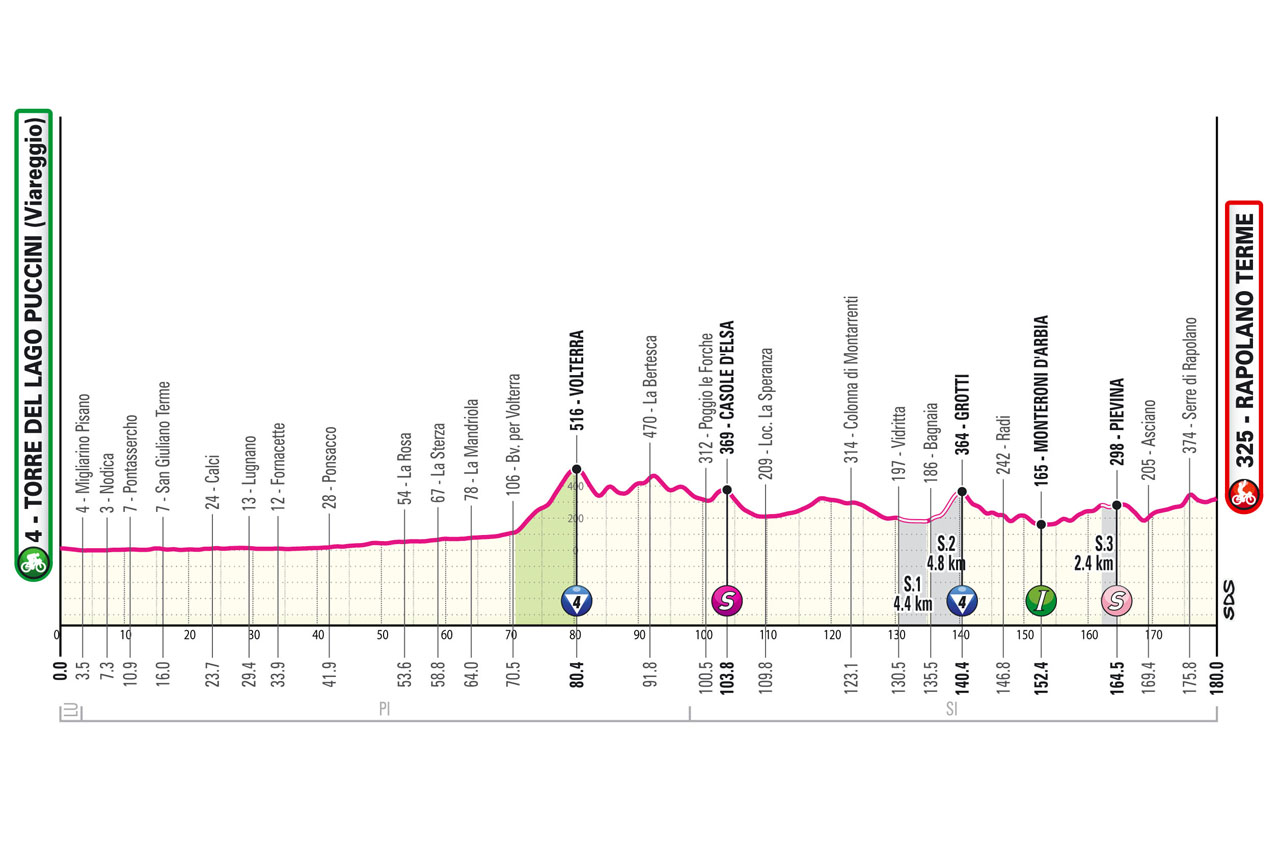
Let's check today's route (Video)
11:32:41
learn more
info percorso
profile
map
technical info
A demanding stage characterised by a hilly second part and three gravel sectors totalling almost 12 km. The first two are shared with the Strade Bianche, the third is a new one. After a flat run-up in the Pisa hinterland as far as Volterra, the peloton will enter the Senese province and face the dirt section of Vidritta, which, compared to the Strade Bianche, is 2 km longer. The Bagnaia section follows just a few hundred metres later, featuring gradients of up to 15% as well as the second KOM of the day. Before Asciano, the Pievina is tackled. Very demanding finale with the wall of Serre di Rapolano.
Last kilometres
The last km are complicated and feature tricky bends and ups and downs. Of note at about 5 km from the finish line is the Serre di Rapolano climb, with gradients of up to 20% in the finale. The final straight is a 450 m stretch on asphalt with a width of 6 m and a gradient of around 6 %.
start / finish
final kilometres
itinerary timetable
tourist info
Host city:
Torre del Lago Puccini (Viareggio)
Food
Traditional dishes that must be tried during a stay in Viareggio
Pasta alla trabaccolara
“Trabaccolara” is a traditional Viareggio dish made using fish that hasn’t sold at the market. The name derives from the lugger, “trabaccolo”, used by the fishermen from San Benedetto del Tronto, some of whom moved to Viareggio between the 1920s and the end of the 1930s. Fish such as gurnard, scorpion fish and weever are needed to prepare the dish, to which some cooks add shellfish (although not part of the traditional recipe). The fish is cooked with tomatoes and flavoured with wine and aromatic herbs.
Risotto with squid and chard
This risotto unites the flavours of the land and the sea and is a favourite served by the local festival street kitchens during the Carnival period. To prepare the risotto, brown the squid, add the chard cut into strips and, once this has softened, add the rice and continue until the rice is cooked; finish the dish with the chopped parsley. Buon appetito!
Viareggio style “Cacciucco”
Strictly with the double “C”s! A simple, traditional fishermen’s dish, this fish stew has been made since the 1500s. Cacciucco, from the Turkish “kuchuk” meaning “small”, would be prepared by fishermen as they returned to port from a fishing trip. The distinguishing feature of Viareggio cacciucco is that it uses the fish of little market value and which the fishermen on landing their catch would otherwise have discarded. To be served accompanied by toasted home made bread, preferably rubbed with garlic. Cacciucco fish stew has a strong and slightly spicy flavour.
Spaghetti “con i nicchi”
So what are “nicchi”? Nicchi are what people from Viareggio call the clams or cockles found on sandy seabeds. They are cooked very simply but are extremely tasty. After purging the “nicchi” of sand by placing them in a bowl of seawater for at least 12 hours, they’re sautéed in a frying pan before adding freshly cooked spaghetti. White wine, garlic and chilli pepper are used to flavour the clams and parsley is added as a final touch.
Spaghetti “con i coltellacci”
“Coltellacci” in Viareggio vernacular are otherwise known as razor shells, which owe their name to the elongated, knife-like form of these molluscs that are found along the shoreline and on rocks after storms at sea. They are prepared plain or with the addition of tomatoes and have a strong, intense flavour.
“Scarpaccia”
Finally, a dessert that isn’t sweet at all but which is usually eaten not only at the end of a meal but also as a snack during the day. A cake featuring finely sliced courgettes as the main ingredient. The resulting flavour, a mixture of sweet and savoury, delights the taste buds. Discover it for yourself!
Points of Interest
The Promenade
The Promenade of Viareggio, one of the most evocative and fascinating places of the Versilia Riviera, features the work of Alfredo Belluomini and Galileo Chini in the many prestigious art nouveau and déco buildings. Extending for 3 kilometres, locals, holidaymakers and visitors from around the world come to enjoy the quintessential holiday atmosphere of the “Passeggiata”.
The Palazzo delle Muse
Originally established as a Thalassic Hospice, in 1912 it became a permanent convalescence home for treating those suffering from tubercular diseases and also to make the benefits of a stay by the sea available to those in need. Today the building houses the municipal library, archive and the Gallery of Modern and Contemporary Art, which, offering an overview of twentieth century Italian and wider European art, is recognised as one of the most specialised galleries in Italy.
The Torre Matilde
The history of the Torre Matilde coincides with that of Viareggio and is an example of 16th century military architecture. As the silent guardian of the coast, the tower bears witness to the centuries of development of the surrounding area. After changes in fortune and use, it is now the venue for cultural events and temporary exhibitions.
The Museo della Marineria
The Museum was founded in order to display finds related to the maritime history of Viareggio and beyond. It is divided into sections dedicated to on-board equipment, shipyards, seafarers and shipwrights and caulkers.
The Casa Museo Giacomo Puccini
The house, transformed into a museum in 1925 by Puccini’s son Antonio, has remained unchanged over time and offers the opportunity to experience the atmosphere of the place where the Maestro found inspiration for his opera masterpieces.
The Villa Museo Paolina Bonaparte
The villa of Princess Pauline Bonaparte was built in 1822 on the seashore on what was then the northern edge of Viareggio to plans by the architect, Giovanni Lazzarini, for a small, secluded residence offering privacy and direct contact with nature. The Villa now houses temporary art exhibitions and is a venue for cultural events.
The Villa Borbone
Villa Borbone is certainly one of the most fascinating historical places in Viareggio. Situated in one of the many appealing parts of the Versilia Riviera along an avenue of lime trees, the “Viale dei Tigli”, the Villa has been restored for use as a multipurpose space by the Municipality and also forms the entrance to the beautiful Regional Park of Migliarino, San Rossore and Massaciuccoli. In the summer season the Villa hosts musical events, cultural festivals and theatrical performances.
The Shipyards
Viareggio is the heart of one of the most significant shipbuilding areas in Italy and is the spearhead of the region’s shipyard supply chain, which is geared to superyacht construction and services, comprising 5,000 companies and directly employing approximately 18,000 workers. With a turnover of 2 billion Euros and 95% of clients for superyachts coming from overseas, the area accounts for 50% of Italy’s revenue from this sector. The local economy linked to pleasure boating involves a wide variety of concerns, professions and trades and over 70 occupations ranging from industry to tourism. Viareggio is home to approximately 1,300 companies that are fully operational in the pleasure boating industry, with a workforce of 8,000 employed in shipbuilding, subcontracting, services and repairs, trade and rental and in the port area. 10 of the world’s leading shipbuilding brands have their headquarters in Viareggio.
Rapolano Terme
Local Cusine
This land grows high quality products such as cereals, olives, vines, or can also be left for grazing. Excellent oil, delicious vegetables, top quality meat and fragrant pecorino cheese, made from the milk of sheep that are lucky enough to feed on the variety of herbs available in the area. The cuisine is the traditional and essential one of rural Tuscany. Vegetable soups, bread soups that become “ribollite” the next day, fresh handmade pasta, and barbecued meat. Rapolano boasts a dessert called the “focaccia rapolanese”, a delicacy that can only be tasted in local bakeries and restaurants. Two disks of short pastry and almonds enclosing a mouth-watering pastry cream.
Punti di Interesse
Rapolano Terme is synonymous with thermal waters and thus with well-being. The San Giovanni thermal baths and the Antica Querciolaia thermal complex are the right places to find comfort and give your body and mind a well-deserved moment of relaxation.
The benefits of the local thermal baths have been known since antiquity and proven by archaeological excavations attesting to the healing powers of their waters.
The vocation for wellness and well-being is complemented by trekking and biking routes that wind through an area of great scenic and naturalistic value. Of note is the Crete Senesi cycle route project.
An important village is Serre di Rapolano. The centre of the village winds around the 13th-century architectural complex of the Grancia, Granaione and Tinaia, which are part of a network of fortified farms belonging to the Sienese hospital of Santa Maria della Scala.


